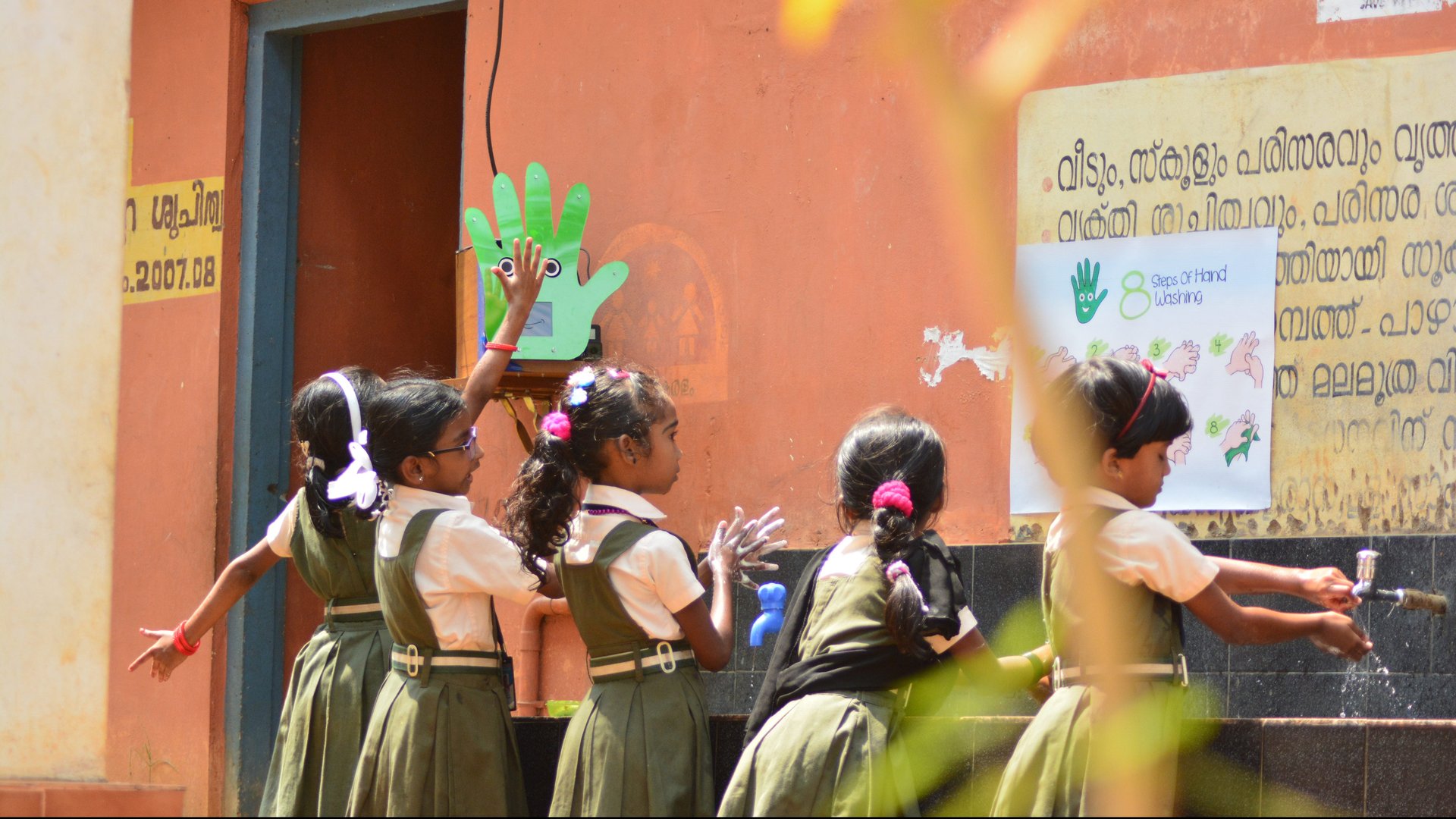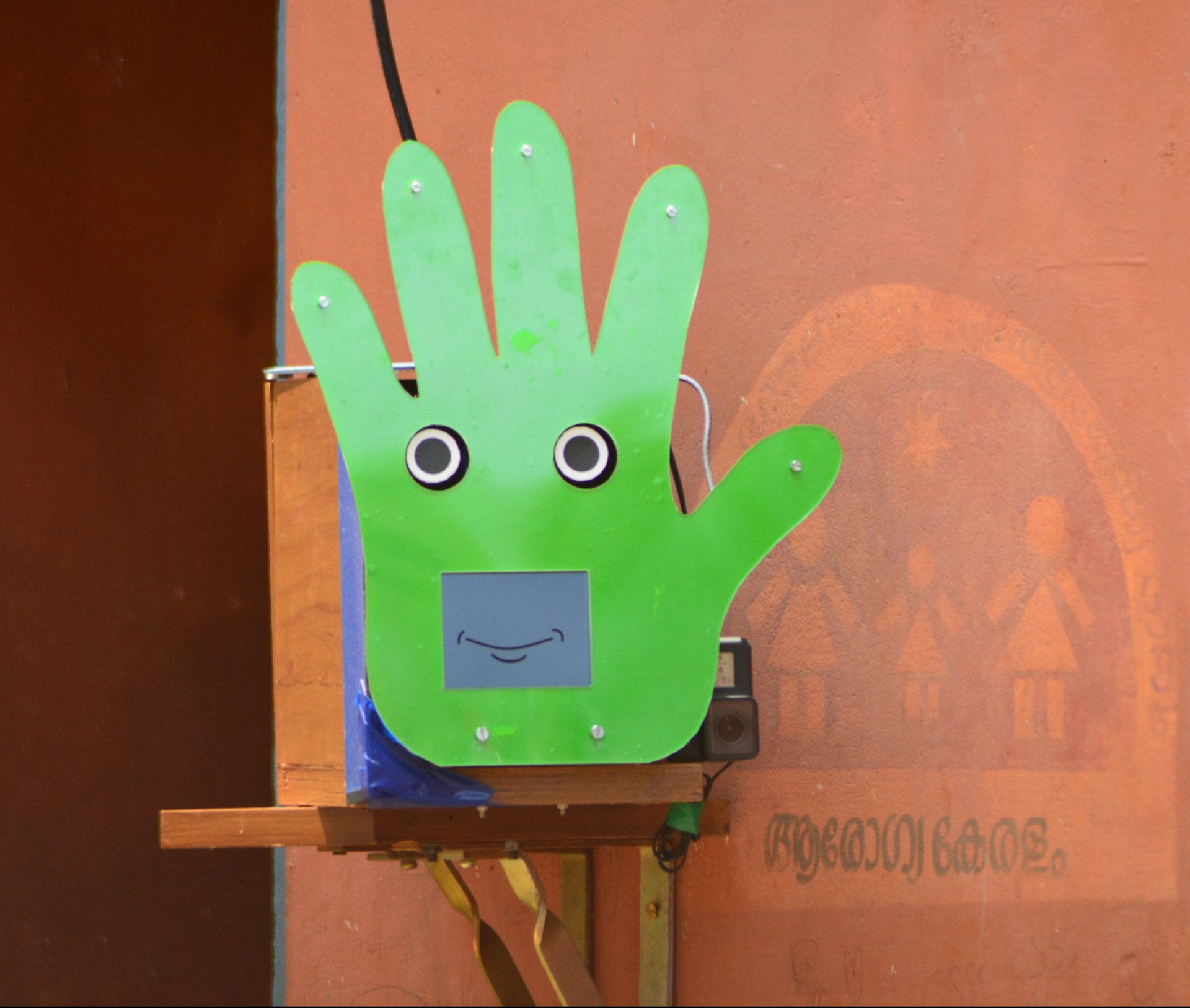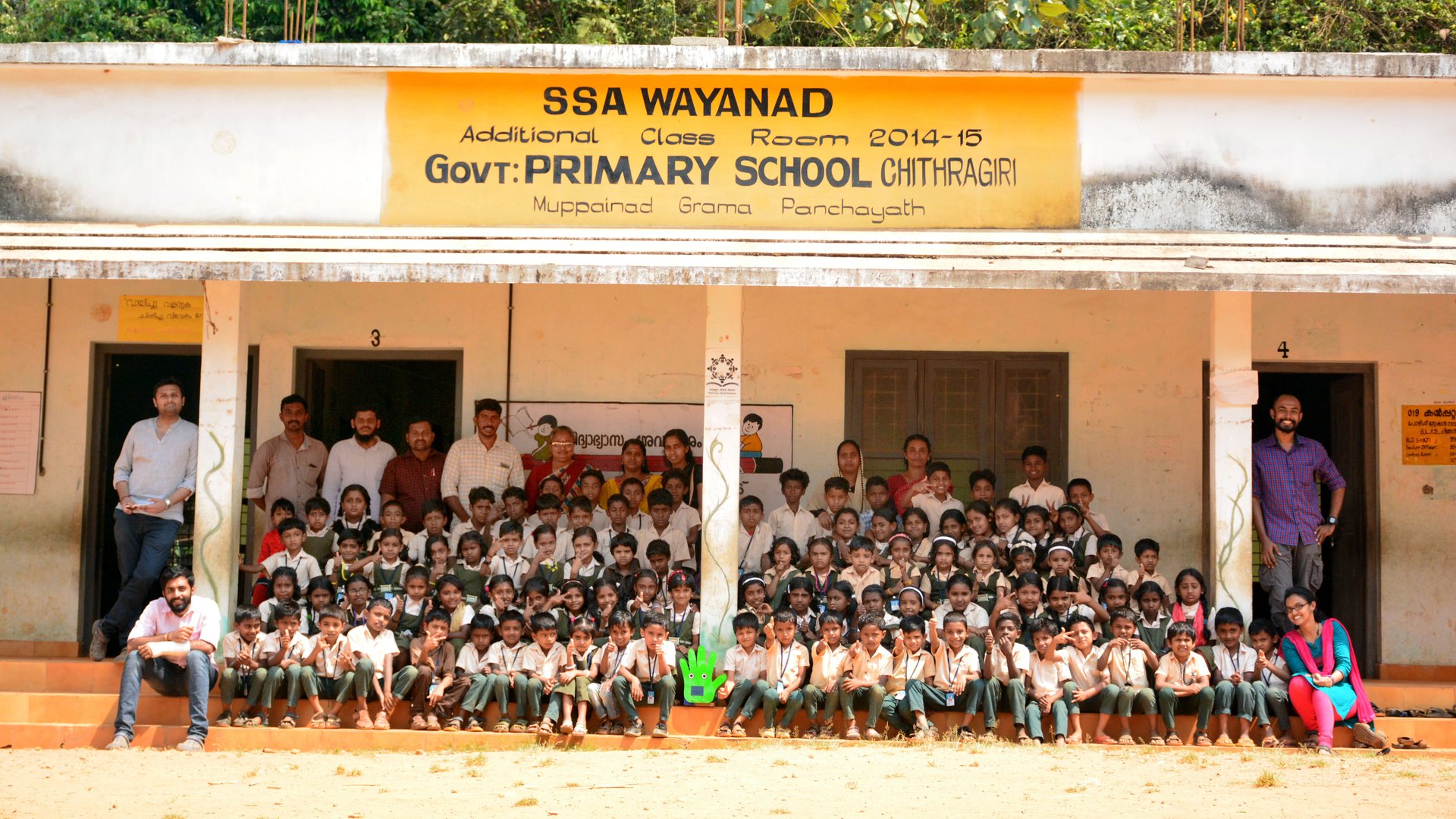A robot is nudging kids at a tribal school in India into washing their hands better
When kids in Wayanad’s Government Primary School Chithragiri in north Kerala go to wash their hands, Pepe watches from above.


When kids in Wayanad’s Government Primary School Chithragiri in north Kerala go to wash their hands, Pepe watches from above.
At the school, with 100-odd students aged between five and 10, the hand-shaped robot sits mounted on a wall above the handwashing station. Installed as a pilot project in March this year, Pepe has boosted pupils’ handwashing rates by 40%, researchers from the University of Glasgow in Scotland and Amrita Vishwa Vidyapeetham University in India found.

A small video screen mounted behind Pepe’s green plastic exterior acts as a “mouth” that researchers can tele-operate to make the robot speak and draw pupils’ attention to a poster outlining the steps of effective handwashing. A set of moving eyes helps bolster the illusion that Pepe is paying attention to the children’s actions.
“Students spend, on average, twice as long washing their hands after Pepe’s arrival,” the researchers said. “After the intervention, more than 95% of the students could correctly determine when handwashing with soap has to be done—before a meal and after a visit to the toilet.”
After the Wayanad pilot, Pepe is set to be rolled out pan-India under the “Embracing the World” initiative of the Mata Amritanandamayi Math, a Kerala-based humanitarian organisation led by the spiritual leader Mata Amritanandamayi, popularly “Amma.”
Besides Kerala, Gujarat, Himachal Pradesh, Uttarakhand, Tamil Nadu and Chattisgarh will also partake in the programme.
Serving the under-served
The experiment in the southern Indian state is significant because handwashing is one of the most effective defences against the spread of diarrhoea and respiratory infections, which claim around 1,300 young children each day around the world—320 of which are in India alone, according to figures from WaterAid India and the World Health Organization (WHO).
“We chose this particular primary school for our research because the pupils are from scheduled castes and tribes, a segment of the Indian population which is most affected by poor sanitation and hygiene,” said Amol Deshmukh from the University of Glasgow’s School of Computing Science.
Pepe, which costs around Rs7,000 ($98), was a hit among the Wayanad children. More than 90% of the 45 students surveyed liked the robot and said they would like to see Pepe again after the school vacation. And the animated bot was clearly believable considering over seven in 10 of them thought Pepe was alive, largely due to its ability to talk.

The future is bot
If past is precedent, social robots and kids are a kind of a match made in heaven.
In a Boston hospital, a robotic teddy bear, “Huggable,” evoked positive emotions in sick children. Research has shown that social robots have the ability to facilitate the learning of some social rules among children with Autism Spectrum Disorder (ASD).
Already, robots like iPal, available in China and soon in the US, act as caretakers and friends, entertaining children for hours on end. Last April, India even got its first homegrown buddy robot for kids—Miko.
And it’s not just kids who stand to benefit. The same set of researchers in Wayanad, last year, introduced a four-wheeled robot to help residents of Ayyampathy, in southern India’s Tamil Nadu state, to carry 20-litre bottles of water from the local well to their homes.
Elsewhere, social robots can provide a sense of companionship for retirees while connecting them to the world and to their loved ones, as well as sending doctor-appointment and medication reminders. Some other use cases include employee recruitment and training and medical services. People are even building robot boyfriends.
If Pepe is being embraced, who knows what other types of social robots could find takers in India, too?